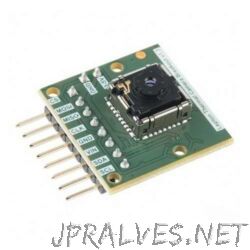

While the Lepton FS is not suitable for radiometric applications, the module can still be used for heat, security, and comfort monitoring applications in the fields of home and building automation, heat and occupancy sensing, or security and location monitoring. Temperature Range – Operating: -10C to +65C storage: -40 C to +80 C.Input supply voltage – 2.8 V, 1.2 V, 2.5 V to 3.1 VIO.Host interfaces – SPI for video data, CCI (I2C-like) for control.Output format – User-selectable 14-bit, 8-bit (AGC applied), or 24-bit RGB (AGC and colorization applied).

Image optimization – Factory configured and fully automated.Low Gain Mode: -10 to 350 degrees C typical.High Gain Mode: -10 to 140 degrees C typical.Non-uniformity corrections – Integral Shutter.Output image independent of camera temperature.Effective frame rate 8.7 Hz (commercial application exportable).Array format – 160 x 120, progressive scan.Spectral range – Longwave infrared, 8 μm to 14 μm.Sensor technology – Uncooled VOx microbolometer.But Ron Justin, GroupGets founder, told CNX Software that the lower specs are more than worth it for users only needing an imager, as opposed to a radiometric sensor. The lower cost was achieved with some tradeoffs, notably a reduction of thermal sensitivity and scene dynamic range, as well as up to 3% inoperable pixels. Teledyne FLIR Lepton FS offers a much more cost-effective solution with the non-radiometric 160 x 120 resolution micro thermal camera module going for $99, or about 50% less than other FLIR thermal camera modules. Thermal cameras based on FLIR Lepton modules are pretty cool, but also quite expensive.


 0 kommentar(er)
0 kommentar(er)
